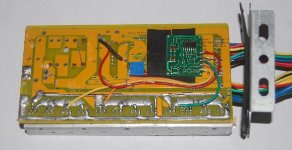Knuckles
10 kW
UPDATE! September 5, 2008
Turns out I had the WRONG controller wire combination that had a bizare effect of actually spinning the motor FASTER but with super high no-load current.
See this spreadsheet for an explaination of testing the Bafang and the Infineon ...
View attachment Phase-Hall-Wire-Combinations-Bafang-Infineon.xls
-K
Turns out I had the WRONG controller wire combination that had a bizare effect of actually spinning the motor FASTER but with super high no-load current.
See this spreadsheet for an explaination of testing the Bafang and the Infineon ...
View attachment Phase-Hall-Wire-Combinations-Bafang-Infineon.xls
-K


